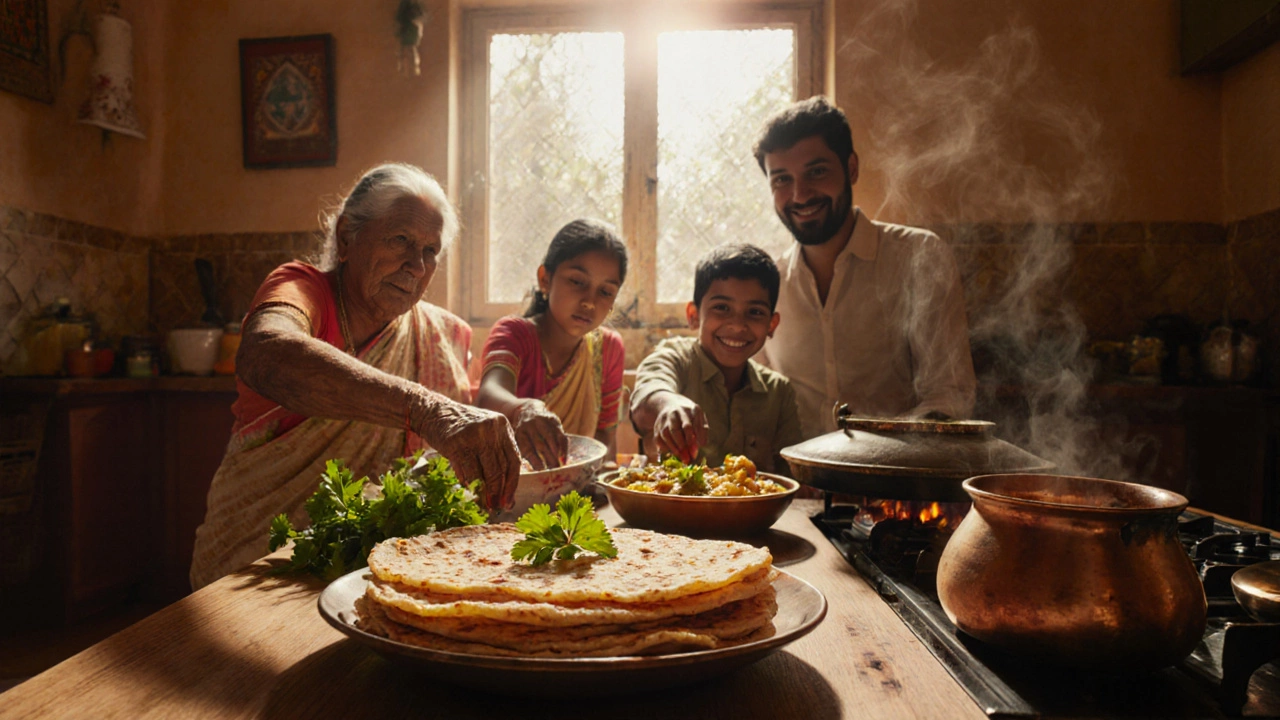
India’s Most Popular Food: Roti (Chapati) Explained
Discover why roti (chapati) is the most eaten Indian food, its nutrition, how to make it, regional variations, and tips for perfect flatbreads.
When talking about Indian staple food, the everyday dishes that form the backbone of meals across India. Also known as essential Indian dishes, it connects regions, seasons and generations. The core of this diet is built on three pillars: rice, a versatile grain that fuels everything from humble breakfasts to grand feasts, wheat, the flour that becomes roti, paratha and countless baked treats and dal, protein‑rich lentils that balance the carbs and add depth to sauces. Indian staple food encompasses these staples, requires simple cooking tools like a pressure cooker or tawa, and influences daily rituals, from morning prayers to festive feasts. Understanding this triad lets you see why a plate of rice and dal feels as familiar as any national symbol.
Rice, wheat and dal don’t just sit on the table; they drive culinary techniques and health outcomes. Rice absorbs spices in biryanis, carries coconut in South Indian curries, and cools heat in pulao. Wheat’s gluten gives dough elasticity for naan, chapati and the crisp layers of paratha, while whole‑grain versions add fiber for heart health. Dal, whether split‑pea, moong or masoor, offers essential amino acids, making vegetarian meals complete. Together they create balanced nutrition: carbs for energy, protein for repair, and fiber for digestion. Regional cuisines highlight these relationships – Punjab leans on wheat‑based breads, Kerala favors rice and coconut, while Gujarat celebrates the sweet‑savory dance of dhokla, a fermented wheat‑dal mix. These staples also appear in cultural moments: fasting rituals replace wheat with rice, festivals like Pongal honor the harvest of rice, and weddings serve elaborate dal‑based dishes to symbolize prosperity.
The posts below draw from this rich backdrop. You’ll find deep dives into Gujarat’s national food dhokla, a tour of street‑food favorites, insights into Indian food history and even how greetings and festivals intertwine with what’s on the plate. Whether you’re curious about the science of spices, the story behind a classic recipe, or the way staple foods anchor Indian identity, the collection offers practical tips, cultural context and vibrant examples. Keep reading to see how these everyday ingredients power everything from daily meals to legendary celebrations.

Discover why roti (chapati) is the most eaten Indian food, its nutrition, how to make it, regional variations, and tips for perfect flatbreads.